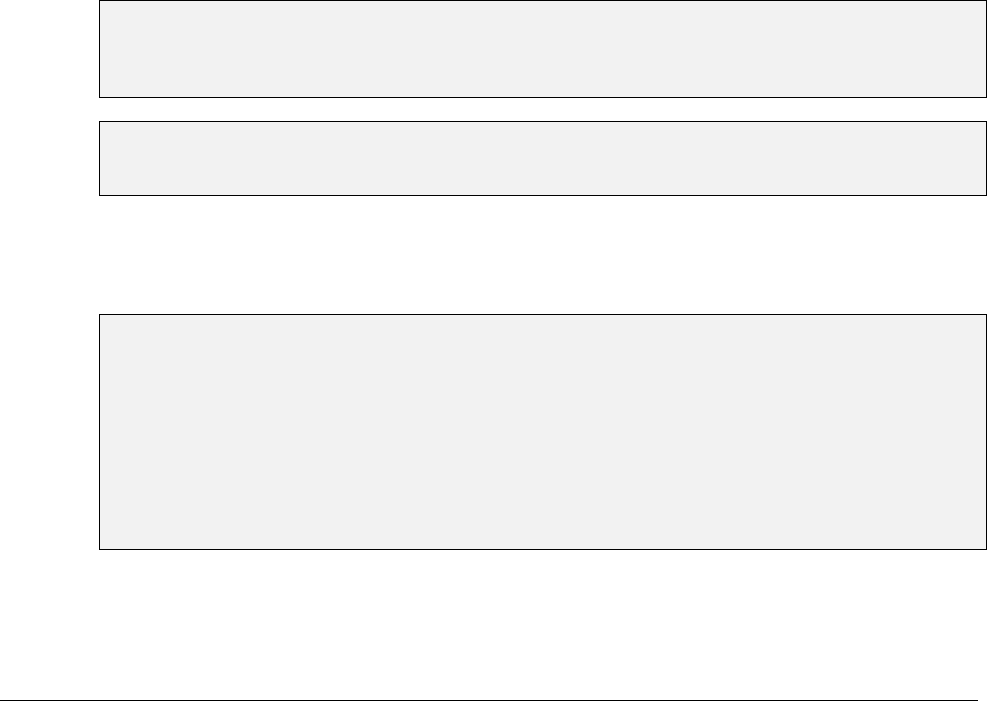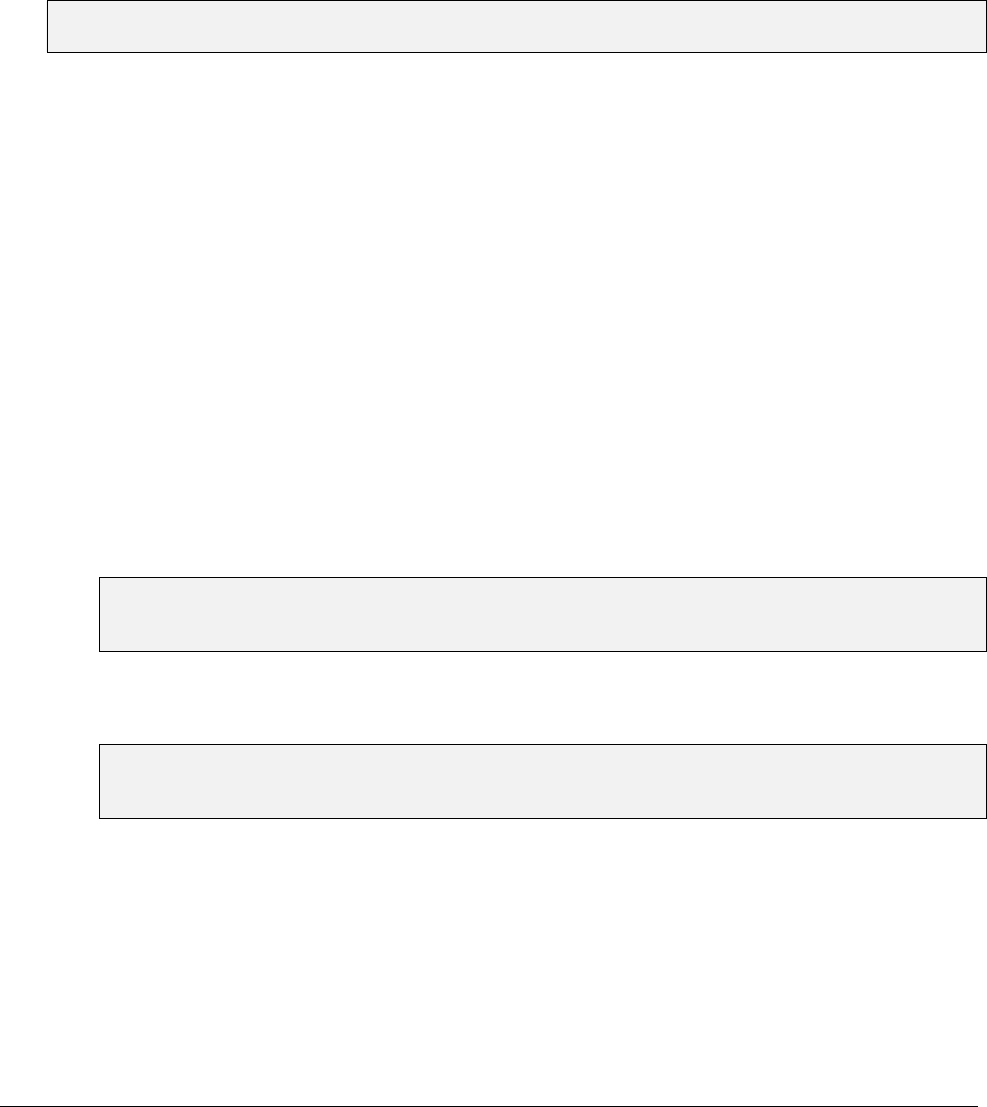
Classification and Compensation
Issue Date: February 1997
Revised: August 2018
1
Wisconsin Human Resources Handbook
Chapter 716
Annual Leave/Holiday Benefits
Sec. 716.010 Introduction Sec. 716.070 Treatment of Leave Credits Upon
Sec. 716.020 Statutory and Rule Authority Movement Within State Service
Sec. 716.030 Definitions Sec. 716.080 Payment for Unused Leave Credits
Sec. 716.040 Annual Leave Sec. 716.090 Paid Leave Calculation
Sec. 716.050 Legal Holidays Sec. 716.100 Referral of Questions
Sec. 716.060 Personal Holidays Sec. 716.110 Administrative Information
Sec. 716.010 Introduction
The purpose of this chapter is to provide guidance in determining annual leave and holiday benefits eligibility. The
provisions in this chapter apply as follows:
1. They have full application to:
a. Classified permanent and project employees.
b. Unclassified employees in the executive branch of State government except elected officials.
c. Unclassified staff of the legislature identified in s. 20.923(4), Wis. Stats.
Note: The provisions in this chapter also apply to permanent and project craft employees, with exceptions as noted.
2. They do not apply to:
a. Public safety employees covered by a collective bargaining agreement with differing provisions.
b. Elected officials.
c. Employees of the judicial branch of State government.
d. Employees of the University of Wisconsin (UW).
e. Unclassified employees in the legislative branch of State government except those identified in 1., c., above.
f. One stenographer employed by each elective executive officer under s. 230.08(2)(g), Wis. Stats.
3. They have limited application to:
a. Boys and girls employed in youth camps (these employees receive payment at a rate of time and one-half
for work performed on a holiday, see b., below).
b. Limited term employees. (See section 716.050, 2., c., 3), of this chapter, relative to pay for work performed
on a holiday by limited term employees.)
Sec. 716.020 Statutory and Rule Authority
1. Section 230.35, Wis. Stats., sets forth the provisions for granting annual leave/holiday benefits to classified and
eligible unclassified employees.
2. Section ER 18, Wis. Adm. Code, Rules of the Division of Personnel Management (DPM) in the Department of
Administration, sets forth the policies to be followed in the administration of annual leave/holiday benefits.

Wisconsin Human Resources Handbook
Ch. 716
Classification and Compensation
Issue Date: February 1997
Revised: August 2018
2
3. Chapter ER 18.02(2), Wis. Adm. Code, sets forth the policies to be followed in calculating continuous service for
employment other than project, and ss. ER 34.06(4) and (5), Wis. Adm. Code, for project employment.
Sec. 716.030 Definitions
For purposes of this chapter, terms are defined as follows:
1. “Continuous service” means all the time in continuous employment status, as defined in s. ER 18.01 (3) and
computed under s. ER 18.02 (2), in the unclassified service or as a permanent employee in the classified service.
Continuous service does not include time served in limited term employment and in those positions under s.
230.08 (2) (k), Stats., regarding youth camps and students, respectively.
s. ER 1.02 (6), Wis. Adm. Code
2. Effective Date of Termination of an employee means the date of the employee’s resignation as determined
under Chapter ER 21, Wis. Adm. Code, or the date specified by the appointing authority for involuntary
termination. In either case, the effective date of termination should be, but need not always be, the day the
employee was last physically present for work or the last day of an employee’s approved paid or unpaid leave of
absence. Temporary layoff shall be treated as a leave of absence.
3. “Leave Credits” mean earned but unused annual leave, termination leave, sabbatical leave, sick leave, personal
and legal holiday time, and holiday compensatory time off. “Leave credits” do not include compensatory time
off credits earned for working overtime.
s. ER 18.01(5), Wis. Adm. Code
4. “Pay Status” means the status of an employee when receiving payment for hours worked or paid leave. Pay status
does not mean the status of an employee while on a leave of absence without pay, on layoff, serving a suspension
without pay, or receiving income continuation or worker's compensation benefits.
s. ER 1.02(24), Wis. Adm. Code
5. Termination/sabbatical Leave: Annual leave that was deferred during the year earned to be used in a subsequent
year to extend the annual leave, unless used for termination leave. As such, termination/sabbatical leave is subject
to the same usage and scheduling policies as annual leave
Sec. 716.040 Annual Leave
1. Amounts.
a. Full-time employees in Fair Labor Standards Act (FLSA) nonexempt status, except permanent and project
crafts workers in pay schedule 04, are provided annual leave in an amount based on their accumulated
continuous service as designated in the following table (see s. 230.35(1), Wis. Stats., s. ER 18.02(3)(c)1.,
Wis. Adm. Code):
Full Years of Service Hours Earned Each Year
During First 5 104
5+ to 10 144
l0+ to 15 160
15+ to 20 184
20+ to 25 200
25 & Over 216

Wisconsin Human Resources Handbook
Ch. 716
Classification and Compensation
Issue Date: February 1997
Revised: August 2018
3
Note: The information provided in a., above, reflects a change in eligibility for the schedule pursuant to s.
230.35(1m), Wis. Stats., in accordance with 2005 Wisconsin Act 21. The changes are effective January 1,
2005, for such employees in state service on or after July 23, 2005, and for those employees who died,
retired or were laid off between June 12, 2005 and July 23, 2005.
Note: See Section K of the Compensation Plan for annual leave provisions for permanent and project crafts
workers in Pay Schedule 04.
b. Full-time employees in FLSA exempt status are provided annual leave in an amount based on their
accumulated continuous service as designated in the following table (see s. 230.35(lm), Wis. Stats., s. ER
18.02(3)(c)3., Wis. Adm. Code):
Full Years of Service Hours Earned Each Year
During First 5 120
5+ to 10 160
10+ to 15 176
15+ to 20 200
20 & Over 216
c. Employees who are regularly employed for less than 2080 hours per year (seasonal, session, school year,
and part-time) are granted prorated annual leave in accordance with the above tables, based on up to a
maximum of 80 hours per biweekly pay period. A projection of the number of hours in pay status in the
calendar year is used to anticipate the amount of annual leave that each employee will accrue during that
year. If an employee’s actual hours in pay status differs from the projected hours, the employee’s annual
leave balance must be adjusted accordingly (see s. ER 18.02(6)(b)5., Wis. Adm. Code).
Note: For employees whose actual hours in pay status are less than their regularly scheduled hours of work
in the pay period, an adjustment to the annual leave balance is made automatically by the payroll system.
For employees whose actual hours in pay status exceed their regularly scheduled hours of work in the pay
period, agencies are not required to make manual adjustments on a biweekly basis but rather should
establish a timeframe (e.g., annual or biannual) for making these adjustments which leaves sufficient time
for employees to use any additional annual leave earned.
d. When an employee’s annual leave earning rate changes during a calendar year, or when an employee
terminates, retires, or dies, the amount of leave for which the employee is eligible is computed for the
applicable portion of the year using the hourly conversion table in e., below.
e. When computation on an hourly basis is needed, the following conversion table shall be used
(see s. ER 18.02(4)(d), Wis. Adm. Code):
Annual Leave Rate Conversion Factor
100 hour rate .048077 per hour
104 hour rate .050000 per hour
120 hour rate .057692 per hour
136 hour rate .065385 per hour
140 hour rate .067308 per hour
144 hour rate .069231 per hour
160 hour rate .076923 per hour
176 hour rate .084615 per hour
180 hour rate .086538 per hour
184 hour rate .088462 per hour
200 hour rate .096154 per hour
216 hour rate .103846 per hour

Wisconsin Human Resources Handbook
Ch. 716
Classification and Compensation
Issue Date: February 1997
Revised: August 2018
4
2. Usage.
Note: Annual leave credits donated or received under the Catastrophic Leave Program will be subject to the carry
over provisions specified in s. ER 18.15, Wis. Adm. Code. Comprehensive information is provided in Handbook
Chapter 660, entitled "Catastrophic Leave Program."
Note: Annual leave credits accrued just prior to, or while on, military leave are exempted from the rules described
below. See bulletin OSER-0046-CLR/LR dated August 4, 2004.
Annual leave shall be taken during the calendar year in which it is earned as provided in s. ER 18.02(6), Wis. Adm.
Code, except as follows:
a. Employees who request and receive approval from their appointing authority or are required by their
appointing authority to defer all or part of their annual leave for a given calendar year shall be permitted to
take it within the first six months of the ensuing calendar year.
b. However, employees who are unable to take unused annual leave as provided in a., above, due to their work
responsibilities shall be granted an additional six month extension of time in which to use the annual leave.
Any such extension shall be approved by the appointing authority. Any carried over leave credits remaining
on December 31 shall be dropped. This limit does not apply to leave designated as termination/sabbatical
leave under the provisions of s. ER 18.02(5)(a)2., or (b)2, Wis. Adm. Code.
c. Employees granted additional leave during the last six months of the calendar year due to changes in the
projected number of hours in pay status shall have the remainder of the calendar year and the first six months
of the ensuing calendar year in which to use the additional leave earned in the previous year.
d. Employees completing the first six months of continuous service as defined in section 716.030(1), of this
chapter, during the first six months of the calendar year shall have the remainder of the calendar year in
which to use annual leave earned in the previous year.
e. Employees completing the first six months of continuous service as defined in section 716.030(1), of this
chapter, during the last six months of the calendar year shall have the remainder of that calendar year and
the first six months of the following calendar year in which to use annual leave earned in the previous
year.
f. Permanent and project employees are not eligible to take annual leave during the first six months of the
most recent period of continuous service in the classified service. Continuous service earned during
employment in the unclassified service does not count toward this six month qualifying period (see s. ER
18.02(3)(a), Wis. Adm. Code). However, per s. 230.35(1)(b), Wis. Stats., an employee can use annual
leave that was accrued while serving in an unclassified position during this six month period.
g. Unclassified employees are not required to complete a qualifying period prior to taking annual leave.
Examples:
An employee has been in a classified position for three months and is serving a twelve-month original
probationary period. The employee transfers to a new classified position and begins a new Twelve-month
original probationary period. The employee is eligible to use annual leave after three months in the new
position (when a total of six months of continuous service has been reached).
An employee is appointed to an unclassified position. The employee may begin using annual leave
immediately since unclassified employees are not required to complete a qualifying period prior to using
annual leave.

Wisconsin Human Resources Handbook
Ch. 716
Classification and Compensation
Issue Date: February 1997
Revised: August 2018
5
Sec. 716.050 Legal Holidays
1. Amount.
a. The State of Wisconsin grants full-time employees nine days of paid leave per calendar year for the
following legal holidays in accordance with s. 230.35(4)(a), Wis. Stats.
1) January 1 (New Year's Day) - 8 hours
2) Third Monday in January for Martin Luther King, Jr. Day - 8 hours
3) Last Monday in May for Memorial Day - 8 hours
4) July 4 (Independence Day) - 8 hours
5) First Monday in September (Labor Day) - 8 hours
6) Fourth Thursday in November (Thanksgiving Day) - 8 hours
7) December 24 (Christmas Eve Day) - 8 hours
8) December 25 (Christmas Day) - 8 hours
9) December 31 (New Year's Eve Day) - 8 hours
b. If January 1, July 4, or December 25 fall on a Sunday, state offices are closed on the following day.
Therefore, employees working the regular workweek observe the holiday by not reporting for work on the
Monday following the respective holiday.
2. Eligibility for Paid Leave and Equivalent Time Off.
a. Eligibility for paid leave for a holiday.
An individual must be an employee on the holiday and either work on the holiday, or be in pay status on
the last scheduled workday immediately preceding the holiday or on the first scheduled work day
immediately following the holiday. An employee who terminates employment immediately prior to a
holiday or a person who becomes an employee immediately after the holiday, shall not be paid for the
holiday. Exception: School year employees on a leave of absence requested by the appointing authority
due to classes not being in session, shall receive pay for all holidays which occur during that leave of
absence provided they work or are in pay status on the last scheduled day immediately preceding or the
first scheduled day immediately following such leave of absence.
Examples (Termination):
If an employee’s effective date of termination is at the end of the day immediately preceding a holiday, the
employee is not eligible for pay for that holiday. For example, an employee who terminates effective the
end of the workday on July 3 when it is the Friday before the legal holiday of July 4 is not eligible for pay
for that Saturday holiday. If the employee has already used some or all of this Saturday holiday, payment
for the number of hours used must be collected from the employee in accordance with section 716.080(4),
of this chapter.
If an employee’s effective date of termination is at the end of the day on the holiday, the employee is
eligible to receive pay for the holiday. For example, an employee who terminates employment effective at
the end of the day on Saturday, July 4, is eligible for pay for the holiday.
The conditions outlined in the examples above also apply to dual holidays (i.e., December 24/December 25
and December 31/January 1). For example, if December 31 and January 1 fall on a Thursday and Friday;
then the following apply:
1) If an employee’s effective date of termination is at the end of the last scheduled workday on
Wednesday, December 30, the employee is not eligible for pay for the two holidays.
2) If an employee’s effective date of termination is at the end of the day on Thursday, December 31, the
employee is eligible for pay for the December 31 holiday, but is not eligible for pay for the January 1
holiday.

Wisconsin Human Resources Handbook
Ch. 716
Classification and Compensation
Issue Date: February 1997
Revised: August 2018
6
3) If an employee’s effective date of termination is at the end of the day on Friday, January 1, the
employee is eligible for pay for the two holidays. In addition, since the employee is in pay status for one
day in the new calendar year, the employee is also entitled to the personal holidays as provided in section
716.060, of this chapter.
Examples (Leave of Absence):
If an employee’s last day in pay status prior to beginning an unpaid leave of absence is the last scheduled
work day prior to the holidays (Wednesday, December 30), the employee is eligible for pay for the two
holidays (i.e. December 31 and January 1).
If an employee returns to pay status from an unpaid leave of absence on Monday, January 4, which is the
first scheduled workday following the holidays, the employee is eligible for pay for the two holidays.
b. Time off with pay for hours worked on a holiday.
1) Except as specified in b., 2., below, an employee required to work on any of the legal holidays
enumerated under 1., a., above, will be granted the number of holiday hours (or a prorated number
for part-time employees) off at a future date.
2) When January 1, July 4, or December 25 fall on a Sunday, the Monday following the holiday is
treated as the holiday for purposes of time off with pay. Consequently, no holiday time off with pay
is provided for work performed on a Sunday holiday. An employee required to work on the
Monday following the Sunday holiday will be granted the number of holiday hours (or a prorated
number for part-time employees) off at a future date.
3) Time off with pay granted for hours worked on a holiday pursuant to c., below, may not be used
until after the holiday for which the time is granted has occurred. Prospective use of compensatory
time off is not permitted (see s. ER 18.04(2)(b)5., Wis. Adm. Code).
c. Pay for hours worked on a holiday.
1) Except as provided in 4) and 5), below, an employee required to work on any of the legal holidays
enumerated in 1., a., above, shall receive compensatory time off or cash payment, either of which
will be at the rate of time and one-half, for all hours worked on the holiday. The employee will also
be granted time off with pay as provided under the provisions of either b., 1. or 2., above, as
applicable.
2) An employee required to work on the Monday following a Sunday holiday (enumerated in 1., b.,
above) will be compensated at the straight time rate. The employee will also be granted time off
with pay as provided under b., 2., above.
3) Limited term employees shall be paid cash at the rate of time and one-half for all time worked on a
holiday.
Examples:
A full-time employee who works eight hours on Sunday, July 4, receives pay for eight hours at a time
and one-half rate; the employee does not receive eight hours of paid holiday leave for use at a future
date.
A full-time employee who works eight hours on Monday, July 5, receives pay for eight hours at the
straight time rate and also receives eight hours of paid holiday leave for use at a future date.

Wisconsin Human Resources Handbook
Ch. 716
Classification and Compensation
Issue Date: February 1997
Revised: August 2018
7
4) Per Section K of the Compensation Plan, Weekend Nurses are not eligible for legal holidays or
compensatory time due an employee for work on a holiday. Weekend Nurses will receive pay at
a rate of time and one-half for work performed on a holiday listed above.
5) Certain agency executives and key governor’s office staff are excluded from receiving premium
holiday pay and compensatory time. Per s. 20.923(16), Stats., the salary paid to any person
whose position is included under s. 20.923 (2), (4), (7), and (8) to (12) is deemed to compensate
that person for all work hours. No overtime compensation may be paid, and no compensatory
time under s. 103.025 may be provided, to any such person for hours worked in any workweek
in excess of the standard basis of employment as specified in s. 230.35 (5) (a).
d. When a holiday falls on an employee’s regularly scheduled day off, including holidays which occur on
Saturday or are observed on a Monday when the holiday occurs on a Sunday, the employee will be granted
equivalent time off. Such time off shall be scheduled at the discretion of the appointing authority who may
permit such time to be anticipated or carried over to the next calendar year and used on the same basis as
annual leave.
e. Employees working nonstandard work schedules such as full-time employees working four 10-hour days
weekly or part-time employees who alternately work an 8-hour day and are off an 8-hour day, should be
advised to use their paid holiday hours each year to maintain a uniform number of hours in pay status
reported for them each pay period. Thus, they will receive their regular pay regardless of when the holiday
occurs. Use of annual leave or working additional hours may be necessary to supplement regularly
scheduled work hours during a pay period in which a holiday occurs.
Example: A 100% employee works four 10-hour days per week, Monday through Thursday. Christmas
Eve Day and Christmas Day fall on a Tuesday/Wednesday. In order to be paid for 80 hours that pay
period, the employee must either supplement the two 8-hour holidays with four hours of other paid leave
(excluding sick leave) or work an additional four hours in the pay period (two hours for each holiday).
Note: It may be necessary to require FLSA nonexempt employees working additional hours to supplement
regularly scheduled hours to do so during the “defined work week” rather than the “pay period” to avoid
incurring premium overtime.
f. Employees who are regularly employed for less than 80 hours per biweekly pay period are granted a
prorated amount of paid legal holiday time consistent with the employee’s regularly scheduled hours per
pay period at the time the holiday occurs (see s. ER 18.04(3)(c), Wis. Adm. Code).
Examples:
A 50% FTE employee is directed to work 100% during the pay period in which Memorial Day occurs.
Because the award of legal holiday hours is based on hours in pay status in the pay period in which the
legal holiday occurs, this employee will receive the full 8 hours of legal holiday for Memorial Day rather
than the usual prorated amount.
A 100% FTE employee requested and was approved to work a reduced schedule (75%) from March 1
through September 30. Because the award of legal holiday hours is based on hours in pay status in the pay
period in which a legal holiday occurs, this employee will receive only 6 hours (75%) of holiday time for
each of the holidays that fall during the term of the employee’s reduced schedule.
Sec. 716.060 Personal Holidays
1. In addition to the legal holidays enumerated in section 716.050, of this chapter, full-time employees earn three
and one-half personal holidays (equivalent to 28 hours of paid leave), plus one personal holiday in recognition of

Wisconsin Human Resources Handbook
Ch. 716
Classification and Compensation
Issue Date: February 1997
Revised: August 2018
8
Veterans Day (equivalent to 8 hours of paid leave), each calendar year. Permanent and project craftsworkers
in Pay Schedule 04 positions do NOT earn personal holidays. These 36 hours of personal holidays are to be
used at the discretion of the appointing authority based on the needs of the service and the preferences of the
employee. Personal holidays earned each year are noncumulative except that, if an appointing authority fails to
give an employee the opportunity to take all personal holiday hours during the calendar year in which they are
earned, the employee may carry over the remaining personal holiday hours to the ensuing calendar year, but such
carryover is limited to that subsequent year.
Note: Personal holidays accrued just prior to, or while on, military leave are exempted from the rules described
below. See bulletin OSER-0046-CLR/LR dated August 4, 2004.
Employees serving the first six months of a probationary or trial period for an original appointment as defined in
s. ER 1.02(22), Wis. Adm. Code, or an equivalent period for project employees, are eligible to take anticipated
personal holidays. However, in the event the employee is terminated by the employer during such a period of
service, the personal holiday will be prorated for the year in which the termination occurs the value of the time
shall be recovered from the employee the employee at the current rate at the current rate of pay. Except as noted
in 3., below, if the employee resigns, any personal holiday granted during the year of the resignation, or in the
previous year if applicable, the value of the time shall be recovered from pay. A resignation in lieu of
termination may be treated as a termination, at the discretion of the appointing authority. However, if an
employee who resigns has worked more than six months without a break in service due to any other classified
position, unclassified or project service, the employee will be entitled to all personal holiday hours for which the
employee had been eligible.
2. Employees who are regularly employed for less than 80 hours per biweekly pay period are granted a prorated
amount of paid personal holiday time. The maximum amount granted is governed by the percentage of budgeted
FTE designated for the position to which the person was appointed. When a new certification request is
effectuated during the calendar year to change the percentage of FTE of a position:
a. If the change results in an increase in the percentage of FTE, the number of personal holiday hours
generated for the employee will change on the transaction effective date appearing on the certification
request.
Example: A 50% FTE position is increased to 100% effective in November. A manual adjustment must be
made to provide the employee the additional personal holiday time necessary to equal the full 36 hours for
the calendar year.
b. If the change results in a decrease in the percentage of FTE, the number of personal holiday hours generated
for the employee will not change until the beginning of the next calendar year.
Example: A 100% FTE position is decreased to 50% effective in March. The employee still receives the
full 36 hours of personal holiday time for that calendar year. Effective with the beginning of the
subsequent calendar year, the employee will receive a prorated amount of personal holiday time.
3. An employee who moves to a UW position will be paid for unused personal holidays, except as follows. If such a
movement occurs while serving the first six months of an original probationary period, there will be no recoupment
of personal holiday already used because such a movement is not considered a resignation, but there will be no
additional payment for the unused portion of personal holidays, because the personal holidays are not considered to
have been accrued by the employee.

Wisconsin Human Resources Handbook
Ch. 716
Classification and Compensation
Issue Date: February 1997
Revised: August 2018
9
Sec. 716.070 Treatment of Leave Credits Upon Movement Within State Service
Note: For more detailed information, including a guide to determine which employees are covered or not covered by
transfer of leave credit provisions, see Wisconsin Human Resources Handbook Chapter 732 Transfer of Continuous
Service and Accumulated Leave Credits Upon Movement within State Service.
Note: Compensatory time credits earned are nontransferable between agencies. If these credits are not used while the
employee holds a position in the agency in which the compensatory time credits were earned, the credits must be paid in
a lump sum amount by the sending agency upon the employee’s movement from that agency to a new position in a
different agency. For more detailed information, see Wisconsin Human Resources Handbook Chapter 520
Administration of the FLSA Overtime Provisions for State Classified Employees and Certain Unclassified Employees.
1. Except as noted otherwise in this paragraph, upon entry to employment covered by these provisions from state
employment which was not covered by these provisions, leave credits accumulated under the employment not
covered by these provisions may be retained by the employee upon mutual agreement between the employee and
the new appointing authority. When positions are converted from the unclassified to the classified service,
benefits for employees who remain in such positions pursuant to a waiver of competition under s. 230.15(1m),
Wis. Stats., are determined by the Administrator of the Division of Personnel Management.
2. Represented public safety employees who move to a position outside the bargaining unit shall be treated as
employees in 3., below.
3. When an employee moves from a position to a different position, both of which are covered by the annual
leave/holiday benefit provisions described herein, any unused accumulated leave credits shall be assumed by the
new appointing authority.
4. When an employee in a covered position moves to a state position not covered by these provisions, the employee
may carry forward any unused accumulated leave credits to his/her new place of employment providing the new
appointing authority agrees to assume them.
5. When an employee in a covered position moves to a state position not covered by these provisions and the new
appointing authority is unwilling to assume any unused accumulated leave credits, the employee is to be paid for the
leave credits in a lump sum amount by the sending agency. However, when an employee moves to a UW position,
personal holiday must be treated in accordance with Sec. 716.060, 3, above.
Sec. 716.080 Payment for Unused Leave Credits
1. Upon termination from employment from a position covered by the annual leave and holiday provisions described
in this chapter, payment for unused prorated annual leave and accrued personal/legal holiday leave credits to which
an employee is entitled will be made as follows:
a. For termination as a result of resignation: Whenever the conditions of resignation as described under s. ER
21.02(1), Wis. Adm. Code, are met, the employee’s termination date will be extended by the amount of leave
credits to which the employee is entitled, unless:
1) The employee requests payment in a lump sum in the notice of resignation; or
2) The appointing authority and the employee mutually agree in writing to a payment of all or part of the
balance in a lump sum. If part of the balance is paid in a lump sum, the remainder of the leave credits
will extend the employee’s termination date as provided under a., above.
b. For termination as a result of layoff, death, or discharge, payment for unused prorated annual leave and
accrued personal/legal holiday leave credits to which the employee is entitled will be made to the employee
or beneficiary in a lump sum amount.

Wisconsin Human Resources Handbook
Ch. 716
Classification and Compensation
Issue Date: February 1997
Revised: August 2018
10
c. For termination as a result of disability, any unused prorated annual leave and accrued personal/legal holiday
leave credits to which an employee is entitled will be treated as an extension of the employee’s termination
date.
2. Employees who terminate during the first six months of a probationary or trial period of an original appointment as
defined in s. ER 1.02(22), Wis. Adm. Code, or an equivalent period for project employees, are not eligible to
receive payment for any annual leave. Personal holiday credits earned during such period of service shall be treated
in accordance with Sec. 716.060, 1 or 3, above. There is no similar qualifying period for employment in the
unclassified service.
3. There shall be no lump sum payment for unused accumulated annual leave or personal/legal holiday credits except
as specified in section 716.070 of this chapter, or upon termination from employment with the state.
4. If prior to termination, an employee has used legal holiday or annual leave time on an anticipated basis, the
employee shall be required to reimburse the employing agency, at the employee’s current rate of pay, for any
anticipated leave used in excess of leave actually earned.
Note: Treatment of unused sick leave credits upon termination from service is covered by s. ER 18.03, Wis. Adm. Code.
See also ss. 40.05(4)(b) and (bc), Wis Stats. for information on the Accumulated Sick Leave Conversion Credit
(ASLCC) program and Chapter 758 – Administration of the Supplemental Health Insurance Conversion Credit (SHICC)
Program, of the Wisconsin Human Resources Handbook.
Sec. 716.090 Paid Leave Calculation
The rounding process for paid leave will be calculated to the nearest hundredth of an hour effective 12/24/2017. This will
make adjustments more accurate. Prior to this date leave was calculated in quarter hour increments.
Sec. 716.100 Referral of Questions
Questions should be directed to staff at the Bureau of Classification and Compensation.
Sec. 716.110 Administrative Information
This handbook chapter revision provides the new annual leave schedule and hourly conversion factors for FLSA
nonexempt nonrepresented employees in accordance with 2005 Wisconsin Act 21.
This handbook chapter was revised June 2018 to generally remove distinctions between represented and non-represented
staff, to delete obsolete information, and to provide new information regarding the use of annual leave during the first six
months of classified service, personal holiday, and legal holiday pay, to clarify that certain executives are excluded from
receiving holiday premium pay and compensatory time, and to reflect the creation of a separate civil service system for
University of Wisconsin employees. Pursuant to the changes introduced by 2015 Wisconsin Act 55, in July 2015, the
Office of State Employment Relations was eliminated and the functions were transferred into the newly created
Department of Administration, Division of Personnel Management. Additionally, in May 2017, the Bureau of
Compensation and Labor Relations was modified to be the Bureau of Compensation and Employment Relations. This
chapter was updated to reflect the changes in terminology that resulted from the organizational restructuring and the
bureau name change.
Chapter 716 was updated in August 2018 to reflect organizational changes that occurred to the Division of Personnel
Management in conjunction with the implementation of Shared Services. The Bureau of Compensation and
Employment Relations was divided into two separate bureaus: The Bureau of Classification and Compensation and the
Bureau of Employee Management.
